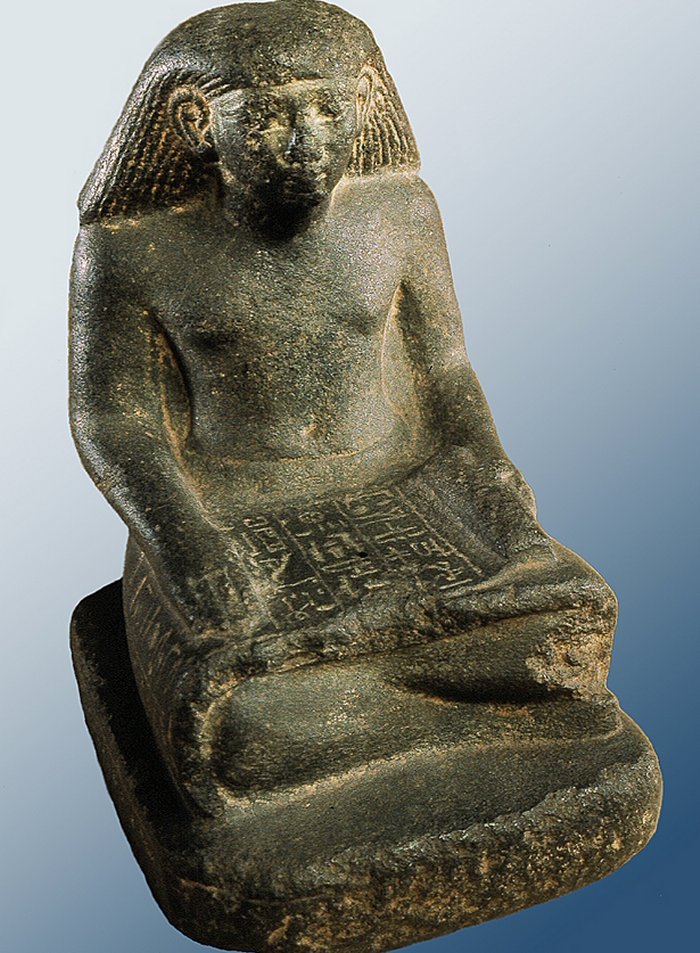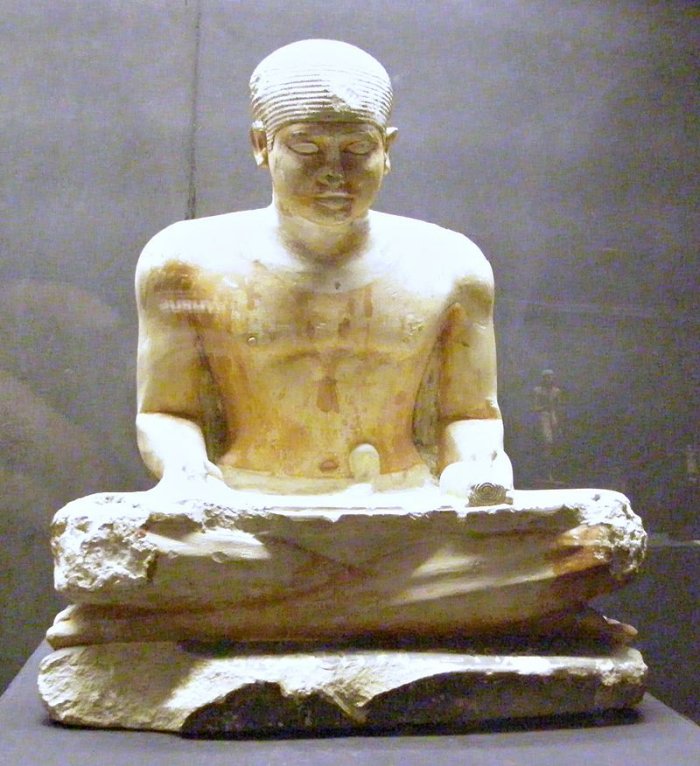Scribes: One Of The Noblest And Highly Recommended Professions In Ancient Egypt
A. Sutherland - AncientPages.com - Ancient Egypt did not have a public school system, so the average Egyptian could neither read nor write. It is estimated that less than one percent of Egyptians—at least during the Old Kingdom—were literate.
This early New Kingdom statue commemorates the scribe Minnakht ("Strength of Min") and demonstrates how ancient scribes read papyri – in a seated position on the floor with the text on their lap. Image credit: Walters Art Museum - Public Domain
Therefore, scribes were widely needed in the country. They represented the largest group of workers (after farmers), including thousands of officials, individuals hired to handle various accounts, official correspondence for large estates, and many freelancers.
Successful scribes never had to do manual labor as others, and society respected them widely.
Sources about ancient Egyptian scribes are known not only from tombs and depictions but also papyri, various seals, and graffiti.
The ancient site in Gebelein, known for its cemetery, has archeological finds stretching from the Predynastic Period to the Middle Kingdom, including a beautiful example of a scribe's wooden box containing lumps of black and red ink, papyri, reeds, and a mortar (dated to the fourth dynasty).
Much of what we know today about ancient Egypt comes from the country's scribes, some of the most valuable professionals who were educated in writing. This writing included hieroglyphics, hieratic scripts, and the demotic script (the first millennium BC), mainly used as shorthand for commerce and arithmetic.
Thoth was the god credited with the invention of writing by the ancient Egyptians. He was the scribe of the gods who kept knowledge of scientific and moral laws. Ancient Egyptian scribes and officials left for us, ordinary people, excellent knowledge about the country's political, administrative, and economic activities due to the records, books, and inscriptions.
Thanks to the scribes, various documents mentioned all of Egypt's social classes and representatives of other nationalities.
Not Everyone Could Become A Scribe
A particular school was needed for scribes to become scribes. You would learn how to read and write hieroglyphics and hieratic scripts at this school. Usually, according to family tradition, the children of scribes became scribes. They were brought up in the same scribal tradition, sent to school, and inherited their fathers' positions after entering the civil service.
Statue of a scribe of the 5th dynasty, Museum at the necropolis of Saqqara; Catalogue Generale no. 63; statue belonged to a person called Ptahshepses and was found in Saqqara mastaba C10; numbering according to Maspero. Image credit: Harald Gaertner - CC BY-SA 3.0
Also, the sons of higher officials, sometimes even farmers' children, and the sons of artisans could attend local temples for instructions in letters.
Long Hard Work And Much Studies To Become A Scribe
It was hard work that usually took four to five years to go through scribe school, where all scholars were male. The scribe needed writing reed brushes dipped in red and black ink for daily work.
Most often, a professional scribe wrote on papyrus. However, the scribes could not do papyrus exercises during the studies because they were costly materials.
Early in the morning, each scribe came to his work with a small basket containing some bread and beer and returned home late afternoon. The students had to confront and learn many complicated scripts, including various signs. At first, they spent plenty of time acquainting themselves with hieroglyphic symbols by repeatedly copying them onto old pottery fragments, limestone flakes, or wood boards with replaceable surfaces until they remembered them perfectly.
Black ink was used for the body of a text, and red to mark chapter headings or significant phrases.
Later, after learning all the necessary basics, the student could begin copying onto papyrus, and yet, the scribe's other skills were needed though they were not easily mastered.
In the "Daily Life of the Ancient Egyptians" by Bob Brier and A. Hoyt Hobbs, we read:
"In addition to hieroglyphs - the picture symbols we most often associate with Egyptian writing - a more cursive form called hieratic was employed for handwriting, and a more abbreviated version called demotic was used for quick notes. When all three symbol systems had been committed to memory, a pupil who showed aptitude could move to advanced courses in mathematics and basic building practices, both of which were taught through practical examples rather than abstraction rules..."
Once again, it is important to stress that these studies were complex and, first of all, very boring for many children.
Scribes Had Many Privileges
Despite difficulties in their studies, however, many students successfully graduated and could become professional scribes with many privileges. As a scribe, a young man could enjoy opportunities for advancement. Specific orders of Egyptian priests required scribal skills, as did the quartermaster corps of the army and many government jobs.
Scribes were considered part of the royal court, were not enrolled for compulsory military service, and did not pay taxes. They were also free from the heavy manual labor and worked with painters and artisans who decorated reliefs and other building works with scenes, prominent figures, or hieroglyphic text.
Egyptian scribes were also extremely busy copying books of the dead for thousands of customers interested in immortality. Such copies did not always represent good quality; many scrolls (incredibly different spells) were beautifully decorated with colored paintings. Others were brief with no illustrations, but people paid for them, and generally, all the scribes' customers were satisfied.
Written by – A. Sutherland - AncientPages.com Senior Staff Writer
Updated on June 27, 2024
Copyright © AncientPages.com All rights reserved. This material may not be published, broadcast, rewritten or redistributed in whole or part without the express written permission of AncientPages.com
Expand for referencesReferences:
Rawlinson G. "Ancient Egypt"
Williams, R. J. Scribal Training in Ancient Egypt
More From Ancient Pages
-
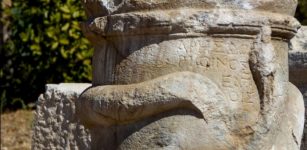 2,000-Year-Old Altar Depicting Snake Figure Unearthed In Lycian City Of Patara
Archaeology | Oct 20, 2020
2,000-Year-Old Altar Depicting Snake Figure Unearthed In Lycian City Of Patara
Archaeology | Oct 20, 2020 -
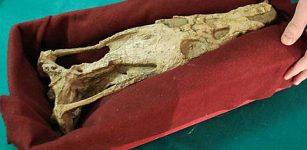 More Than 1000 Bones Of Extinct Predators From 240 Million Years Ago – Found In Upper Silesia, Poland
Fossils | Dec 11, 2023
More Than 1000 Bones Of Extinct Predators From 240 Million Years Ago – Found In Upper Silesia, Poland
Fossils | Dec 11, 2023 -
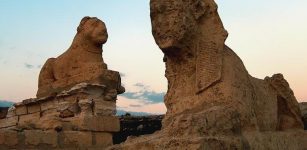 Thriving Faiyum Oasis Declined And Was Abandoned Due To Climate Change
Archaeology | Jan 26, 2021
Thriving Faiyum Oasis Declined And Was Abandoned Due To Climate Change
Archaeology | Jan 26, 2021 -
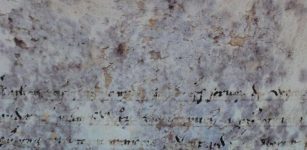 Part Of Secret Vatican Manuscript Decoded
Archaeology | Sep 7, 2017
Part Of Secret Vatican Manuscript Decoded
Archaeology | Sep 7, 2017 -
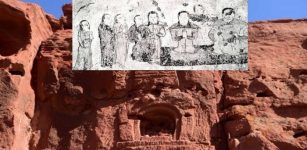 Seven 1,600-Year-Old Arjai Grottoes With Frescoes – Restored
Archaeology | Jul 11, 2020
Seven 1,600-Year-Old Arjai Grottoes With Frescoes – Restored
Archaeology | Jul 11, 2020 -
 ‘Blue Highways’ Helped Middle Stone Age Humans Who Survived The Toba Supereruption 74,000 Years Ago
Evolution | Mar 26, 2024
‘Blue Highways’ Helped Middle Stone Age Humans Who Survived The Toba Supereruption 74,000 Years Ago
Evolution | Mar 26, 2024 -
 Monstrous Nomoli Figures Left By Unknown Culture That Vanished Long Ago
Artifacts | Mar 13, 2023
Monstrous Nomoli Figures Left By Unknown Culture That Vanished Long Ago
Artifacts | Mar 13, 2023 -
 Golosov Ravine – Mysterious Time-Warping Mist Causing Unexplained Disappearances And The Ancient Shrine Of God Veles
Featured Stories | Jul 3, 2021
Golosov Ravine – Mysterious Time-Warping Mist Causing Unexplained Disappearances And The Ancient Shrine Of God Veles
Featured Stories | Jul 3, 2021 -
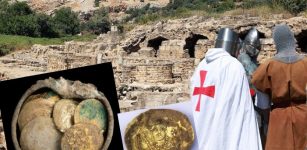 Treasure Hoard Of Rare Gold Coins From The Crusader Conquest Discovered In Caesarea, Israel
Archaeology | Dec 8, 2020
Treasure Hoard Of Rare Gold Coins From The Crusader Conquest Discovered In Caesarea, Israel
Archaeology | Dec 8, 2020 -
 Abu Dhabi Fossil Dunes May Have Inspired The Ancient Great Flood Story – Professor Says
Archaeology | Jul 10, 2022
Abu Dhabi Fossil Dunes May Have Inspired The Ancient Great Flood Story – Professor Says
Archaeology | Jul 10, 2022 -
 Mysterious Moon-Eyed People – Ancient Subterranean Race In Conflict With The Cherokee
Featured Stories | Dec 28, 2017
Mysterious Moon-Eyed People – Ancient Subterranean Race In Conflict With The Cherokee
Featured Stories | Dec 28, 2017 -
 Rök Stone (Rök Runestone): Longest Runic Inscription Ever Discovered
Featured Stories | Jun 12, 2024
Rök Stone (Rök Runestone): Longest Runic Inscription Ever Discovered
Featured Stories | Jun 12, 2024 -
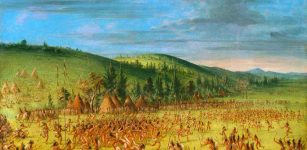 Lacrosse Was Invented By Native American Indians
Ancient History Facts | May 1, 2016
Lacrosse Was Invented By Native American Indians
Ancient History Facts | May 1, 2016 -
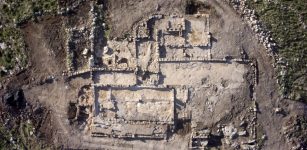 Impressive 2,700-Year-Old Farmhouse And 1,500-Year-Old Monastery Uncovered In Rosh Ha-‘Ayin
Archaeology | Dec 30, 2015
Impressive 2,700-Year-Old Farmhouse And 1,500-Year-Old Monastery Uncovered In Rosh Ha-‘Ayin
Archaeology | Dec 30, 2015 -
 Frey – Handsome Vanir God Of Fertility And Lord Of The Elves In Norse Beliefs
Featured Stories | Mar 3, 2018
Frey – Handsome Vanir God Of Fertility And Lord Of The Elves In Norse Beliefs
Featured Stories | Mar 3, 2018 -
 Modern Humans Did Not Enter Europe By Sea – New Study Says
Archaeology | Mar 7, 2022
Modern Humans Did Not Enter Europe By Sea – New Study Says
Archaeology | Mar 7, 2022 -
 Illness And Death Of The Edward Of Woodstock ‘Black Prince’ Changed The Course Of English History
Archaeology | Dec 21, 2022
Illness And Death Of The Edward Of Woodstock ‘Black Prince’ Changed The Course Of English History
Archaeology | Dec 21, 2022 -
 New Species Of Stegosaur Is Oldest Discovered In Asia, And Possibly The World
Fossils | Mar 7, 2022
New Species Of Stegosaur Is Oldest Discovered In Asia, And Possibly The World
Fossils | Mar 7, 2022 -
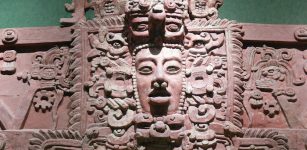 Fixing Archaeology’s Dating Problem – New Method Developed By Scientists
Archaeology | Sep 17, 2021
Fixing Archaeology’s Dating Problem – New Method Developed By Scientists
Archaeology | Sep 17, 2021 -
 Spells And Magic Were Important To Samurai Warriors And Used In Battles
Featured Stories | Oct 7, 2017
Spells And Magic Were Important To Samurai Warriors And Used In Battles
Featured Stories | Oct 7, 2017

